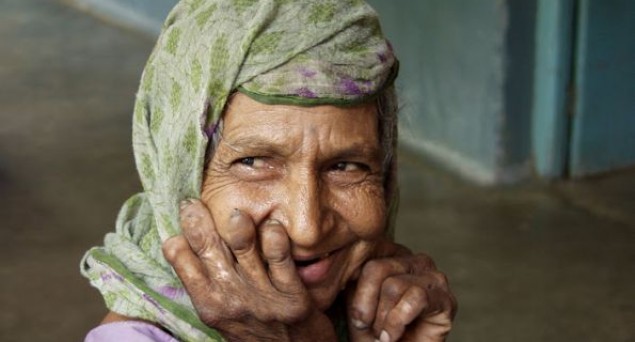Ghazanfar Abbas, IndiaTomorrow.net,
New Delhi, Jan 30: This day every year is observed, in India, as Leprosy Eradication Day. Ten years after eliminating the disease as a public health problem, leprosy is again becoming an epidemic in the country.
The latest report of the World Health Organization shows that India accounts for 60% of the global total of new cases of leprosy. The statistics provided by WHO suggests that India still needs to adopt inclusive approach in order to end the scourge of leprosy.
Although India achieved elimination of leprosy as a public health problem in 2005, it has the largest number of leprosy patients in the world and pockets of high endemicity report thousands of new cases every year. In 2015, a total of 127, 326 new cases were detected in the country accounting for 60% of the global total of new cases, compared with 125,785 new cases in 2014. Of the new cases, 8.9% were children and 6.7% presented with visible deformities.
In 2015, a total of 211,973 new cases were reported worldwide. Around 60% of those cases were found in India followed by Brazil and Indonesia.
WHO defines elimination of leprosy as a prevalence rate of less than 1 case per 10,000 persons. Under its National Leprosy Eradication Programme (NLEP) launched in 1983, India achieved the goal of elimination of leprosy under that parameter at the national level in December 2005.
“Hidden” cases of leprosy in India
Besides reported cases of leprosy, there are thousands of unreported cases of the disease thanks to social stigma attached to it. A record 320 million Indians have been screened in door-to-door leprosy detection campaign under the National Leprosy Eradication Programme (NLEP) of govt. of India conducted from 14 September to 4 October 2016 covering 149 districts in 19 states. The campaign found thousands of “hidden” cases. One of the highest numbers was detected in Bihar (4400 cases).
Leprosy is a chronic infectious disease caused by “Mycobacterium leprae” which results in severe disfiguring skin sores and nerve damage in the arms and legs. It is also known as Hansen’s disease (named after Dr. Armauer Hansen, who discovered the bacteria). The disease is curable and treated by the Multi-Drug Therapy (MDT).
Global status of leprosy in 2015
Leprosy continues to afflict thousands of people every year, the majority of them in the South-East Asia. According to WHO, Leprosy affected 212,000 more people globally in 2015.
In 2015, a total of 211,973 new cases were reported from 108 countries worldwide. Some 95% of all cases occur in 14 countries each reporting 1000 or more cases. These countries included Brazil, Bangladesh, Democratic Republic of the Congo, Ethiopia, India, Indonesia, Madagascar, Mozambique, Myanmar, Nepal, Nigeria, Philippines, Sri Lanka and the United Republic of Tanzania.
More than 14000 (or 8%) of new cases have visible deformities, meaning that many patients are presenting late for diagnosis and may already have spread the infection to others, while the nearly 19,000 (11%) children in whom leprosy is diagnosed indicate that active transmission in communities is ongoing.
In most cases, leprosy is curable and many national programmes report cure rates exceeding 90%.
In 2016 WHO launched a new global strategy – “The Global Leprosy Strategy 2016-2020: Accelerating towards a leprosy-free world” – which aims to reinvigorate efforts for leprosy control and to avoid disabilities, especially among children affected by the disease in endemic countries.





